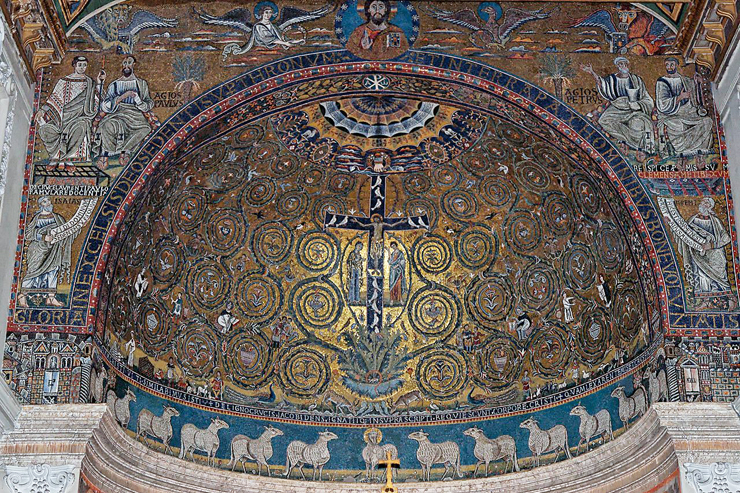 After reflecting over the tedium and complacency that are often companions of repetition, this week I found myself thinking of another companion of repetition: comfort. At times we do need to be shaken out of our routine, especially if we have taken Scripture, prayer, or the daily graces God gives us for granted. We need to ask him to bring newness to what has become monotony.
After reflecting over the tedium and complacency that are often companions of repetition, this week I found myself thinking of another companion of repetition: comfort. At times we do need to be shaken out of our routine, especially if we have taken Scripture, prayer, or the daily graces God gives us for granted. We need to ask him to bring newness to what has become monotony.
Yet that “sameness” can also bring a great sense of comfort. We often gravitate to what is known and familiar. Especially when our lives experience some sort of upheaval—whether it is a personal tragedy like sickness or death, a time of uncertainty like a job loss, or even a societal change like a political or cultural revolution—we seek stability. We intellectually know that the most stable thing in our lives is God our Father, who is unchanging and omnipresent. Being human, we need some physical reminder of this fact.
Scripture, prayer, the sacraments, and the Church are our reminders of this stability. No matter where the winds are blowing in our lives or in society, we can rest in the knowledge that Christ built his church on Rock. While giving capricious Peter a name connotating stable constancy might have caused snickers among Peter’s friends, it is a reminder to us that we are part of a Church that has lasted two thousand years.
While driving to work I pass many Protestant communities, especially since I live in what some would call the buckle of the Bible Belt. Their signs advertise service times, funny puns, thoughtful reminders, or other announcements. Several of the signs over the past few weeks have welcomed new pastors. I found myself wondering how the pastors and their families came to the congregations. How were they invited or hired? Did they have to pass a rigorous interview process with the elders of the congregation?
We as Catholics are no strangers to the joys and sorrows of priest reassignments and new pastors. But I found myself thinking about those Protestant communities and what would happen if the new pastor came with a new theology. What if he challenged beliefs that the congregation held dear? How would his ideas be evaluated? Would he be shuffled aside for a new pastor?
The night after the United States Supreme Court redefined marriage, my friends and I met for drinks to remind ourselves that the world wasn’t ending. We wanted to cheer ourselves up and toast our parents and family, friendships, and the love of God. One of my friends commented how grateful she was to be Catholic—that in this time, she had the comfort and confidence of belonging to a family that was not going to redefine truth. Her American world might have been shaken, but she was standing on foundations much deeper, much older, much truer.
The next week I drove by two different churches with signs celebrating the decision. And I thought back to what Casey had said that night.
I stand on the foundations of something much bigger and older than me. From the day of my baptism, when I was baptized into the Body of Christ and that Body of Christ professed the faith that my infant voice could not, I was part of something older, richer, deeper than myself. The communal faith of the Church preexisted my own personal faith—made clear by the fact that no one can baptize themselves.
Repetition can lead me into monotony and lukewarmness, but it can also remind me that I don’t need to reinvent the wheel. There are days when I can’t find words to pray. And that’s okay—the Church supplies them. Maybe all I can do is cling to my Rosary beads or whisper the responses at Mass. The Holy Spirit prays for us when we can’t (Romans 8:26-27) and the Body of Christ does too. We are not alone.
I am blessed to be a member of a Church who has celebrated the same liturgy for the last two thousand years. I walk into a Catholic church and know who waits for me there—Jesus Christ. I can go to Mass in Peru or Canada or the Philippines and have the comfort of being home—of hearing the same readings, of partaking of the same sacred banquet. I can pray the Divine Office in Nashville and know that the same psalms were prayed by the Holy Father in Rome.
A few years ago I led a pilgrimage to Rome. Among the dozens of other incredible sites we visited, we went to San Clemente, a twelfth century church built over a fourth century church built over a 1st century house church. We were walking amongst the excavations of the fourth century church, and I was mentioning that Sts. Cyril and Methodius had brought the body of St. Clement back to the church. Suddenly it hit me. Sts. Cyril and Methodius had come on pilgrimage to the same church where we were on pilgrimage in the twenty-first century. I had known this intellectually for some time, just as I knew centuries of holy men and women had come to the Eternal City. It had hit my head before that moment—but now it hit my heart. In ways I still cannot express in words, I suddenly felt the weight and joy of the age of the Church. We were part of something ancient. This pilgrimage was not some novel twenty-first century activity. You are part of a heritage that much richer, much deeper, much bigger than you. You are walking—literally—in the footsteps of the saints.
But we don’t need to go to Rome. All we need to do is go to Mass or pick up a Rosary. We just need to open up the Scriptures. Reading the same words that the great saints have read before us, we can be comforted: “This again.” Whatever our struggle, whatever our needs, we stand in great company.














